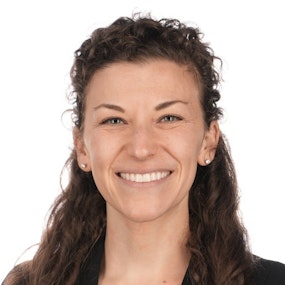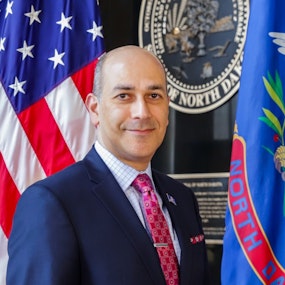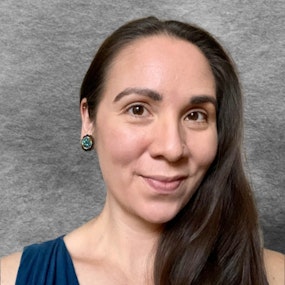Transcript:
ROBERT JOHNSON: 00:03
This is Public Health Review Morning Edition for Thursday, June 8, 2023. I'm Robert Johnson. Now, today's news from the Association of State and Territorial Health Officials.
JANELLE PALACIOS 00:14
I believe our government should prioritize data collection. And we need that to happen now.
ROBERT JOHNSON: 00:21
Dr. Janelle Palacios is a researcher and advocate. She also was on the Advisory Committee on Infant and Maternal Mortality when it issued a groundbreaking report about the need to improve health outcomes for American Indian and Alaska Native mothers and their babies.
JANELLE PALACIOS 00:37
At this point in time, the big recommendation included in our report was that we have data; that we have standardized data that's collected on this population, American Indian and Alaskan Native population, but also in our country in general, and that states and territories and federal agencies need to be clear on collecting this data, and that we can no longer just continue to call this the asterisk nation or the asterisk population or the something else nation.
ROBERT JOHNSON: 01:04
Palacios talks about the urgent need for data to help these populations in a new episode of the Public Health Review Podcast coming soon everywhere you stream audio.
Speaking of data, worries continue about rising rates of STIs in the country. This is ASTHO's Julia Greenspan:
JULIA GREENSPAN 01:22
Last month, the CDC released new surveillance data and it just continues to show that rates of STIs are going up at a rate unseen in recent years. And then things like congenital syphilis are also really important because that impacts pregnant people and their babies. So, it's important to address STIs and they can really impact a wide variety of people.
ROBERT JOHNSON: 01:49
Greenspan says policy approaches can help drive the response.
JULIA GREENSPAN 01:54
One way that we've found that health officials can address STI rates is focusing on policy approaches. ASTHO has a new report entitled 'Policy Considerations for Reducing Congenital Syphilis,' and that includes some information for state health officials to address rising congenital syphilis rates. And when talking about STIs in general, it's also important to remember policy and programming that minimizes barriers and helps to address stigma.
ROBERT JOHNSON: 02:19
You can read the report and visit other related resources using the links in the show notes. North Dakota has a plan to become the healthiest state in the nation. We catch up with state health officer Dr. Nizar Wehbi in Chicago to hear more about the goal and the plan to get there.
North Dakota has a very interesting and hopeful goal for the people of the state. Tell us what it is and why you've made that goal.
NIZAR WEHBI 02:53
Yeah, thanks for the question. So, North Dakota is planning to become the healthiest state in the nation. And this is kind of like to ensure that every single citizen in the state receives the health services that they need when they need it. We have this aspirational goal because we wanted to make sure that we improve the health status of every citizen. So, one thing that a lot of people do not realize is that North Dakota, in the year of 2000, was the healthiest state in the nation. And throughout the years, it was dropping in the ranks till now where it ranks now the 19th in the nation. So in essence, yes, it is an aspirational goal. But it is an achievable goal, because we were there -- we were the healthiest state in the nation.
ROBERT JOHNSON: 03:48
So how do you get that designation back? How do you make up for the last 20-some odd years?
NIZAR WEHBI 03:54
Great question. As I said that since there are like these 50 to 60 different measures, some of which fall within the realm of public health within health and human services; whether it is you know, related to screening, annual checkups, the cleanliness of water, education. So, all these are things that we can affect, we can change or we can help our citizens to adopt healthier behaviors. There are other aspects that we have to go and reach out to other agencies and other partners within the state within our community. So then together, we can help improve these measures as well.
ROBERT JOHNSON: 04:40
What are some of the approaches you're taking to achieve the goal?
NIZAR WEHBI 04:44
So, now that COVID is behind us, hopefully, with the public health emergency expiring, now we are shifting to a more preventative public health-based approach. So, as a starter, we are asking and trying to promote preventative care, public health, annual checkups, mammograms, colonoscopies, things that will allow us to detect, as well as to prevent diseases at very early stages.
ROBERT JOHNSON: 05:14
How is the public reacting to this goal? The goal of trying to get back to where you were at the turn of the century here, what is their take on this effort?
NIZAR WEHBI 05:23
Yeah, I think everyone would love to become healthier. It is a lofty goal. And one important aspect in achieving this goal is to engage our citizens because in the end of the day, when we talk about chronic disease management when we talk about high blood pressure or obesity or exercise, each citizen should get a vested interest in becoming healthier. So, it is not just the role of the Department of Health and Human Services to become or to make the state healthier, it is the role and the responsibility of every single citizen to become engaged and to have a vested interest in becoming healthier.
ROBERT JOHNSON: 06:11
Finally, this morning, stay informed about the latest ASTHO news with ASTHO's Public Health Weekly email newsletter. Sign up by clicking the link in the show notes.
That will do it for today's newscast. We're back tomorrow morning with more ASTHO news and information. I'm Robert Johnson. You're listening to Public Health Review Morning Edition. Have a great day.







